There have never been more LGBTQ+ characters on movie screens, according to a new report.
GLAAD's latest annual Studio Responsibility Index—an annual report card that measures diversity in Hollywood—showed that 18.6 percent of films released by major studios in 2019 (22 of 118) featured lesbian, gay, bisexual, transgender, or queer roles. This is a slight improvement over the previous year, which recorded 18.2 percent.
While LGBTQ+ representation is trending slightly upward, the opposite is true for racial diversity in this pool. Only 34 percent of LGBTQ+ characters were nonwhite in 2019 productions; in 2017, that figure stood at 57 percent, which represents a significant drop.
\u201cThe racial diversity of LGBTQ characters in films from major studios saw another significant decrease this year, with only 34 percent of LGBTQ characters being people of color, compared to 42 percent in 2018.\nhttps://t.co/eCT4wo9S6w\u201d— GLAAD (@GLAAD) 1594911139
Queer women also fell in representation from 55 percent in 2018 to 36 percent (8) in 2019. Gay men appeared in 68 percent of these films. Only 14 percent of productions (3) showcased bisexual characters, and for the third year in a row, there was no trans representation. Only one LGBTQ+ character had a disability: Poe, from Lionsgate’s Five Feet Apart.
\u201cLesbian representation has decreased significantly, down to 36 percent (8) of inclusive films from 55 percent in 2018. Bisexual representation slightly decreased to 14 percent, a one-percentage point drop but an equal number of films (three).\nhttps://t.co/athBWg4nli\u201d— GLAAD (@GLAAD) 1594910733
\u201cThere were ZERO films with transgender characters from the major studios in 2019, a disappointing finding consistent with the last two years.\nhttps://t.co/athBWg4nli\u201d— GLAAD (@GLAAD) 1594910763
In 2018, GLAAD asked major studios to set goals for increasing LGBTQ+ representation in films: 20 percent of characters by 2021 and 50 percent by 2024. Four studios actually hit the goal in 2019: Paramount Pictures (33 percent), United Artists Releasing (29 percent), Lionsgate (25 percent), and Walt Disney Studios (21 percent).
Using its "Vito Russo Test," GLAAD assigned grades to major studios based on the quantity, diversity, and quality of LGBTQ+ representation. No studio received Excellent or Good ratings this year. Other ratings were Insufficient (Lionsgate, Paramount Pictures, United Artists Releasing, and Universal Pictures), Poor (Sony Pictures Entertainment and Walt Disney Studios), or Failing (STX Films).
"Despite seeing a record high percentage of LGBTQ-inclusive films this year, the industry still has a long way to go in terms of fairly and accurately representing the LGBTQ community," said GLAAD President and CEO Sarah Kate Ellis. "If film studios want to stay relevant to today's audiences and compete in an industry that is emphasizing diversity and inclusion, then they must urgently reverse course on the diminishing representation of LGBTQ women and people of color, as well as the complete absence of trans characters."
GLAAD recommended that in addition to adding more and a greater diversity of LGBTQ+ roles, films should dedicate more screen time to these characters, as most barely register for audiences. Family films still lag behind other genres, the report noted.
Taking these measures is not only beneficial to LGBTQ+ people — they will benefit the bottom line, stressed Megan Townsend, GLAAD’s director of Entertainment Research & Analysis.
"Telling meaningful LGBTQ stories is not just the right thing to do, it’s also just smart business. LGBTQ people are a significant audience who are supporting LGBTQ-inclusive films with our dollars and digital attention," Townsend said. "Nielsen found LGBTQ audiences are more likely to see a new theatrical release more than once compared to straight audiences and continue to stay engaged consumers, with higher levels of purchasing a digital copy, subscription service, and spreading the word online."
Read the full report on GLAAD's official website.




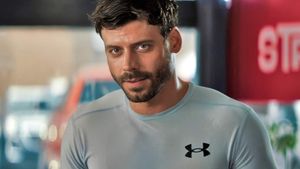



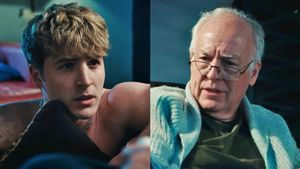


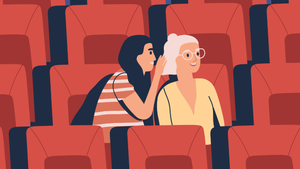




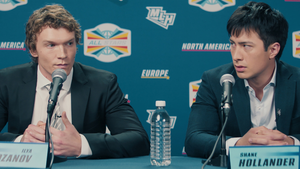
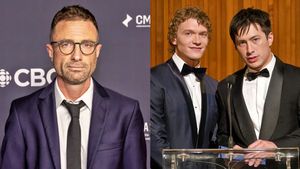




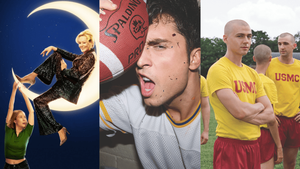














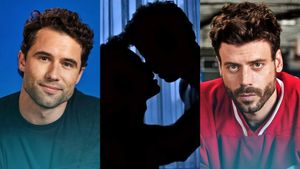

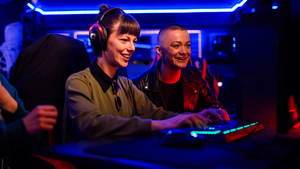
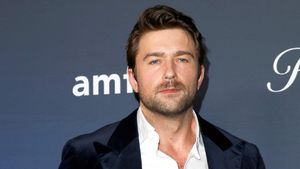

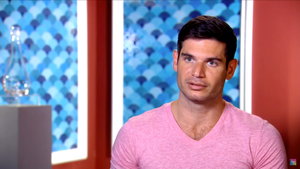








 Reed Birney as Hank Grant and Kieron Moore as Aaron Eagle in Blue Film.Fusion Entertainment
Reed Birney as Hank Grant and Kieron Moore as Aaron Eagle in Blue Film.Fusion Entertainment Kieron Moore as Aaron Eagle in Blue Film. Fusion Entertainment
Kieron Moore as Aaron Eagle in Blue Film. Fusion Entertainment  Reed Birney as Hank Grant in Blue Film.Fusion Entertainment
Reed Birney as Hank Grant in Blue Film.Fusion Entertainment Kieron Moore as Aaron Eagle in Blue Film. Fusion Entertainment
Kieron Moore as Aaron Eagle in Blue Film. Fusion Entertainment  Reed Birney as Hank Grant in Blue Film.Fusion Entertainment
Reed Birney as Hank Grant in Blue Film.Fusion Entertainment Director Elliot Tuttle at the premiere of Blue Film at 2025 NewFest at SVA Theater in New York City.Rob Kim/Getty Images
Director Elliot Tuttle at the premiere of Blue Film at 2025 NewFest at SVA Theater in New York City.Rob Kim/Getty Images The official poster for Blue Film.
The official poster for Blue Film.













